This article was medically reviewed by Jennifer Boidy, RN. Jennifer Boidy is a Registered Nurse in Maryland. She received her Associate of Science in Nursing from Carroll Community College in 2012.
This article has been viewed 163,410 times.
If you've already tried anti-fungal creams, ointments, tablets, and suppositories to treat your persistent yeast infection, then you may want to try boric acid, which is an alternative treatment for chronic yeast infections. Boric acid suppositories, capsules that you insert into your vagina, can be used to treat stubborn or resistant yeast infections caused by less common forms of yeast. Whether you make your own capsules or get them from a pharmacy, properly used boric acid suppositories can cure, and possibly help prevent, vaginal yeast infections. Be sure to speak with your doctor or OB/GYN about this method so you understand proper use.
Steps
Using the Suppositories
-
1Talk to your doctor before using any treatment. Before using any over-the-counter medicine to treat a yeast infection, see your doctor or OB/GYN to confirm the diagnosis. They will likely do a physical exam and ask you questions about your health history. They will rule out other causes of vaginal discomfort before diagnosing a yeast infection. They can also advise you on how long to use boric acid and warn you of any health effects. Alternate treatments may be more effective for you based on your personal health history.
- Your doctor can give you a prescription to take to your pharmacy to have capsules made.
- When you go to your doctor, be ready to discuss the history of your symptoms and how they have evolved, including how many yeast infections you’ve had in the past and what is similar and different this time.
-
2Get the capsules made at your local pharmacy. If you decide not to make your own boric acid capsules you should be able to get them from your pharmacy. The pharmacy will have to make them because they’re not currently sold pre-made.[1] Call in advance to ask, because some pharmacies will not make them. If necessary, call around to find a pharmacy able and willing to help.
- It will help to tell them what you intend to use it for, so they don’t think you’re trying to poison someone! Boric acid is also used to kill rats.
-
3Insert the suppository properly. Wash your hands and the outside of your vagina using mild soap and water just before bedtime. Lie down on your back and gently bend your knees with your legs slightly apart. Use your finger or an applicator to insert the boric acid suppository as far up into your vagina as it will comfortably go. Wait several minutes for the suppository to dissolve before sitting or standing up, or just thoroughly wash your hands then go directly to sleep.
- If you’re using a reusable applicator, clean it as directed by the manufacturer. Otherwise, throw it away.
- If it’s hard for you to insert the suppository while lying down, try standing with one foot propped up on the edge of the bathtub or a chair.
- It’s normal to have some discharge when using suppositories. Wear a panty liner to bed to avoid staining your underwear.
-
4Do 14 days of treatment to cure a yeast infection. To get rid of a current yeast infection, insert one-two suppositories per day for two weeks, based on the instructions from your doctor.[2] One should be inserted before bed. Do not use them for longer than two weeks.
- The first time you use this method, it’s best to consult with your doctor or OB/GYN.
-
5Prevent recurring infections with biweekly use. After you treat the yeast infection you currently have, use boric acid to prevent future infections. Use one suppository two nights out of the week – for instance, every Tuesday and every Friday. Do this for 6-12 months, or as long as your doctor recommends.
-
6Take a probiotic during your treatment. Boric acid is good at killing both fungus and bacteria, so consider taking a probiotic daily while you’re using boric acid suppositories to help promote “healthy” bacteria in your vagina. You can get probiotic capsules at the pharmacy, or eat yogurt with “live cultures.”
- You can alternate using lactobacillus acidophilus suppositories during the day and boric acid at night.[3]
Using Boric Acid Safely
-
1Do not use boric acid if you’re pregnant. Boric acid can affect the health of your baby. If you’re pregnant and get a yeast infection, talk to your OB/GYN about alternate treatment. Do not use boric acid suppositories.[4]
-
2Use alternate treatment if you have open wounds on your vagina. Do not use boric acid if you have any broken skin that the boric acid can possibly contact.[5] This includes open sores, wounds, or cuts in or around your vagina. Also be sure to wear gloves if you make your own capsules and have cuts on your hands.
- If the powder contacts your skin (other than inside your vagina where it’s meant to dissolve), wash the area thoroughly.[6]
-
3Do not ingest boric acid. Boric acid can be a safe and effective treatment for yeast infections when inserted into your vagina. However, never take a boric acid capsule by mouth. Boric acid is toxic when taken orally. If you accidentally swallow boric acid, seek emergency medical assistance immediately.[7] Ingesting boric acid causes vomiting, diarrhea, and abdominal pain and can be fatal.[8]
- If someone else accidentally swallows it, be prepared with the following information when you call for emergency services: The person’s age, weight, and condition (awake/unconscious/vomiting, etc.), how much was swallowed, and what time it was swallowed.[9]
- In the United States, call 1-800-222-1222 to speak with the poison control center for further tips while waiting for emergency services.
Creating Your Own Capsules at Home
-
1Gather the materials you’ll need. To make boric acid suppository capsules at home, you will need the following tools: Boric acid powder (not crystals), empty size 0 gelatin capsules, a clean sheet of paper, and a clean kitchen knife.
- Boric acid powder should be readily available at most convenience stores such as Walmart, CVS, and Rite Aid. If you cannot find it, a pharmacist can probably order it for you.[10]
- Look for empty gel capsules at local stores and pharmacies like Walmart, a vitamin or health food store, or order them online.
- You may also want to wear latex or rubber gloves, as boric acid can irritate the skin.
-
2Fill your capsules using a sharp knife. Lay a clean sheet of paper on a flat surface to catch any spills. Over the paper, dip the small tip of your clean knife into the powder and use the knife to carefully spoon the powder into an open capsule. Close the capsule tightly.[11]
- A capsule should contain around 600mg of boric acid. Fill the capsule with as much powder as it will hold.
-
3Fill your capsule using the funnel method. If you’d prefer, use your sheet of paper like a funnel to fill your capsules. First, make a sharp crease down the middle of the paper. Then put a small amount of boric acid on the paper, and tilt the paper so the powder pours neatly into the capsule until the capsule is full. Close the capsule tightly.[12]
-
4Store them in a cool, dry place. It’s okay to make up many capsules at once. Store them in an old vitamin container or other waterproof, sealed container. If possible, put a small packet of silicon in there with them to help prevent moisture. They should keep well for up to a year.[13]
- Do not store them in the refrigerator.
Expert Q&A
Did you know you can get expert answers for this article?
Unlock expert answers by supporting wikiHow
-
QuestionI inserted my first capsule last night and went straight to bed. It's now been 13 hours, and I haven't had any watery discharge. Does that mean it's not working?
 Jennifer Boidy, RNJennifer Boidy is a Registered Nurse in Maryland. She received her Associate of Science in Nursing from Carroll Community College in 2012.
Jennifer Boidy, RNJennifer Boidy is a Registered Nurse in Maryland. She received her Associate of Science in Nursing from Carroll Community College in 2012.
Registered Nurse Watery discharge is a possible side effect of using boric acid suppositories, as is a mild burning sensation; however, these side effects do not indicate whether or not the boric acid is working. Your best indication will be relief of symptoms. Be sure to closely follow the instructions from you healthcare provider, and if you have any concerns about the treatment or side effects, contact the doctor’s office.
Watery discharge is a possible side effect of using boric acid suppositories, as is a mild burning sensation; however, these side effects do not indicate whether or not the boric acid is working. Your best indication will be relief of symptoms. Be sure to closely follow the instructions from you healthcare provider, and if you have any concerns about the treatment or side effects, contact the doctor’s office.
Warnings
- Mild burning and skin irritation can occur when using boric acid.⧼thumbs_response⧽
- Do not use boric acid suppositories if you are pregnant or might be pregnant.⧼thumbs_response⧽
- Boric acid is toxic if taken orally.⧼thumbs_response⧽
- Always consult your doctor before using any at-home remedies.⧼thumbs_response⧽
- Never use boric acid on children. Keep capsules away from children to prevent accidental ingestion.⧼thumbs_response⧽
- Do not use more boric acid capsules than prescribed, and do not use more than one per day. If your body absorbs too much of it you can get kidney failure or serious problems with your circulatory system that can be fatal.[15]⧼thumbs_response⧽
References
- ↑ https://www.ncbi.nlm.nih.gov/pmc/articles/PMC1784796/pdf/9812253.pdf
- ↑ http://www.mayoclinic.org/diseases-conditions/yeast-infection/basics/alternative-medicine/con-20035129
- ↑ http://www.yeastinfection.org/vaginal-suppository-treatments-with-boric-acid/
- ↑ http://healthcenter.ucsc.edu/pharmacy/references/bori%20acid%20for%20yeast%20infections.pdf
- ↑ http://healthcenter.ucsc.edu/pharmacy/references/bori%20acid%20for%20yeast%20infections.pdf
- ↑ http://www.nytimes.com/health/guides/poison/sodium-borate-poisoning/overview.html
- ↑ http://www.nytimes.com/health/guides/poison/sodium-borate-poisoning/overview.html
- ↑ https://www.ncbi.nlm.nih.gov/pmc/articles/PMC1784796/pdf/9812253.pdf
- ↑ http://www.nytimes.com/health/guides/poison/sodium-borate-poisoning/overview.html
- ↑ https://www.earthclinic.com/bacterial-vaginosis/boric-acid-cure.html
- ↑ http://healthcenter.ucsc.edu/pharmacy/references/bori%20acid%20for%20yeast%20infections.pdf
- ↑ http://healthcenter.ucsc.edu/pharmacy/references/bori%20acid%20for%20yeast%20infections.pdf
- ↑ http://www.yeastinfection.org/vaginal-suppository-treatments-with-boric-acid/
- ↑ https://www.ncbi.nlm.nih.gov/pmc/articles/PMC1784796/pdf/9812253.pdf
- ↑ http://healthcenter.ucsc.edu/pharmacy/references/bori%20acid%20for%20yeast%20infections.pdf
About This Article
Boric acid suppositories are an alternative treatment for a chronic yeast infection. To insert a boric acid suppository, start by washing your hands and the outside of your vagina with a mild soap and water. Then, lie down on your back and gently bend your knees with your legs held slightly apart. Use either your finger or an applicator and gently insert the boric acid suppository into your vagina. Continue to push it as far as it will comfortably go so it won’t fall out. Remain on your back for a few minutes before you get up to allow it to dissolve. For tips about how often to use boric acid suppositories, keep reading!


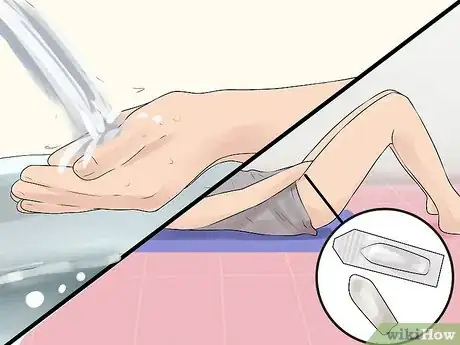






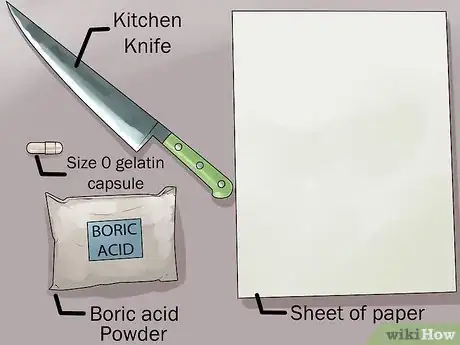
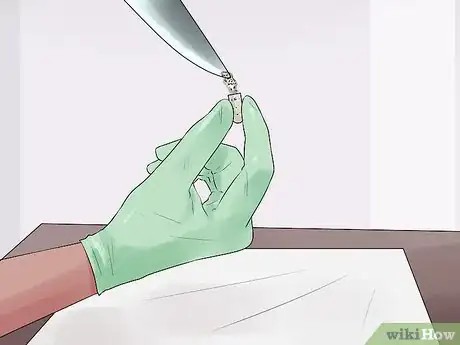
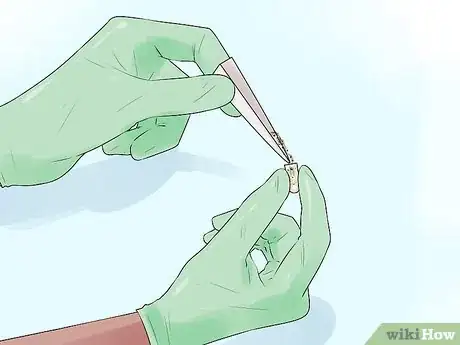


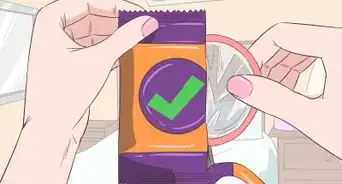

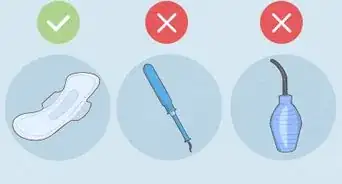





-Step-10-Version-2.webp)


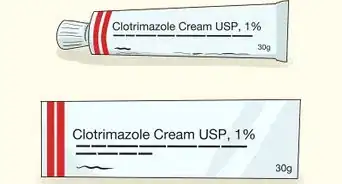









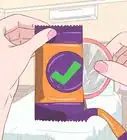

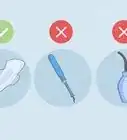



































Medical Disclaimer
The content of this article is not intended to be a substitute for professional medical advice, examination, diagnosis, or treatment. You should always contact your doctor or other qualified healthcare professional before starting, changing, or stopping any kind of health treatment.
Read More...